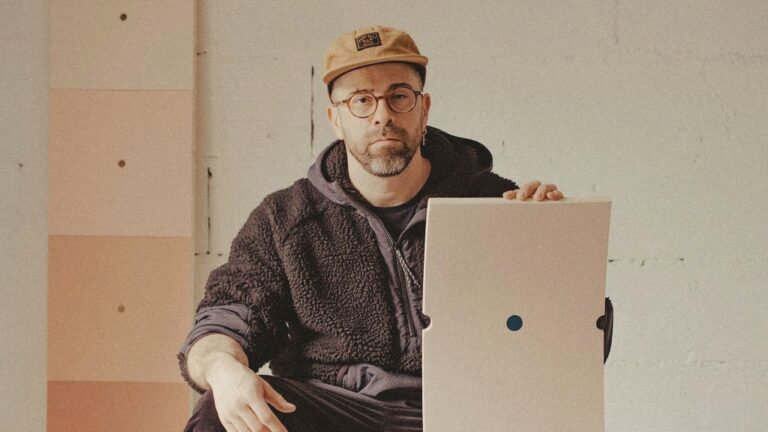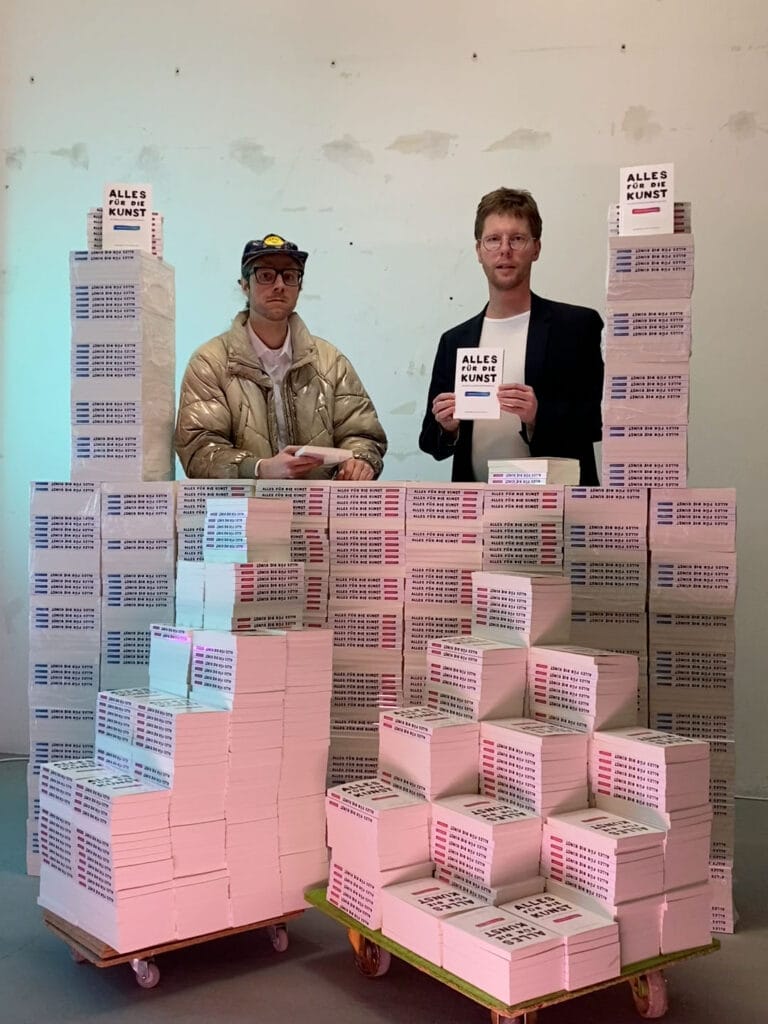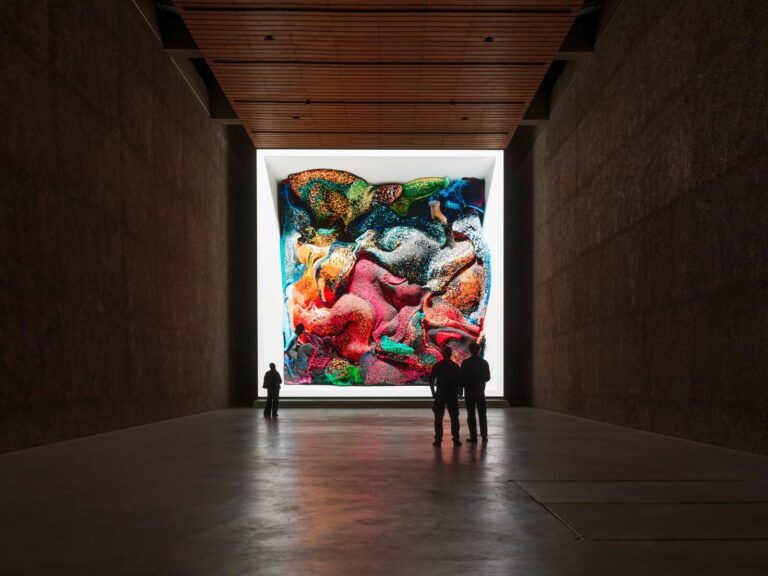
A Conversation with Alejandro Javaloyas
A Studio Visit During the La BIBI Residency
These ten commandments—including an additional eleventh commandment—are published in Everything for Art: How To Be A Successful Artist; an art world introduction and guide for artists to become successful. I only recently discovered it and can sincerely say that it is by far the best I have read so far. It is so accurate that it almost felt that I had written it myself. As with our CAI Advice for Artists, it discusses all the unwritten rules of the art world, here described as the art system, and the information comes from people who are actually working in the field and actually have become successful, established artists.
The content of the book is, for instance, also confirmed by artists who are represented by mega-galleries. Other publications always lack that in-field experience, and this book shares exactly that in the most plain, honest, and true manner—hence overlapping naturally with our platform. Feel free to have a look at the publication and discover the current price here.
We start with the most self-explanatory commandment that is simultaneously also the most important—everything for art. “You have to breathe art, eat art, rub it on yourself, et cetera.” Art always comes first. Your self must adapt to the needs, as is the case for your environment and social circles. With every decision in life, you must ask yourself: what is best for my art and art career? Do you go to the opening of relevant artists or do you prefer to have a quiet evening at home because you’re a bit tired? Always chose art.
“Learn from the masters.” This is perhaps one of the most important things to accept when you are starting out or still developing your taste, style, and oeuvre. Don’t study artists you find cool today on social media, but use established artists as a benchmark, example, guide, and inspiration. So what preoccupies today’s established artists, and how have they behaved to achieve what they have achieved throughout their careers? Have a look at the artists represented by mega-galleries such as Pace, Gagosian, David Zwirner, Hauser & Wirth, Thaddaeus Ropac, Lisson Gallery, et cetera, and find artists you can relate to while still remaining true to yourself. Follow them, learn from them, become them.
There is no excuse for not working. If you’re not working hard, then you are not pursuing your goal of becoming a successful artist. “A rule for the beginning of your career: In order for you to sell one work, you must produce 15.” Work a lot, work hard. Practice makes perfect. Overcome your weaker self and step out of your comfort zone.
I love the following quote about what good art is and how it can only result from hard work: “Good art causes problems—good art tugs at your nerves. Good art is too big and too complex for your small studio. Good art is beyond the scope of your budget. Good art requires an extra trip to the art supply store or hardware store. Good art needs something after closing time. Good art requires overtime. Good art doesn’t just fit in the trunk of your car. Good art can’t just be sent by regular mail. Good art is exhausting.” Only by going the extra mile you can pursue success.
“Set yourself ambitious goals.” It is an already ambitious goal to pursue a professional career as an artist. However, only those who set themselves ambitious goals and believe in them will achieve anything. Don’t be loud about your goals. Work for them. Play the game of belief, and it will actually happen.
“You need friends and allies! You reach the top together. Not alone!” The art world is a very complex construct in which you can’t become a successful artist all by yourself. You need people who will help you and support you in your development, and you’ll most likely have to do the same for others if you want people to return the favor. Seek out people in the art world who have similar goals and ideas as you accompany one another on parts of the journey.
“If you want success, you have to be willing to eat dirt. The world wasn’t waiting for you, and for the time being, it’s not interested in you, either.” You’re allowed to be eccentric; you’re allowed to stand out. You can move in certain elite circles, but never put your ego before your art. Don’t forget, in reality, the world keeps turning even without art and the art system. So don’t take yourself so seriously.
Invest in materials, your workplace, tools, education, networking, and so on. Invest in trips for networking, education, or attending relevant art events. If you urgently need a good text or a website and you can’t do it yourself or through friends, then get it done right for money. Investing does not mean spending money senselessly! Always weigh up your investments well and consider other options. If necessary, lead a spartan life so you can invest more in your career. “Invest in your art, not your well-being or comfort.”
Who you know usually determines where you are exhibited, and where you are exhibited determines how relevant you are in the artistic canon or art system. Almost everything works via connections. Accept it, or become an amateur artist! Use your network both ways, get help, and help others.
Be a networker in places where people and institutions relevant to the art system are concentrated. Go to relevant openings and art events in your area. Find one or two friends in the art world who are also ambitious and who will go with you. If you are an introvert, force yourself to network. Exchange contact details with new people and cultivate the contacts you already have. “Over the years, you get to know a lot of people and scatter seeds everywhere. It’s worth it. You’ll harvest the crop later.”
You need to keep questioning yourself and your actions to a healthy degree without fueling self-doubt or giving in to hubris. “Only those who regularly check their position can keep their feet on the ground.” Be optimistic, yet realistic. Always try to view and evaluate your work and career objectively.
Think of being an artist as a profession like others—and a profession requires professionalism. Reliability and a sense of duty are paramount here. Keep your word. Complete everything in a timely manner, including reading and replying to emails. In the art world, there are many rules, conventions, and business practices—things we have discussed frequently on this channel. It is worth noting that some are difficult to understand, especially for young artists or artists who are new to the art world. Accept them anyway for now. Everything else is just unprofessional and exhausting for your art world business partners. The international art world is English-speaking and computer skills are a must. Make sure to be punctual, be loyal, be professional.

Last Updated on October 19, 2023

A Studio Visit During the La BIBI Residency

A Reasoned Anthology